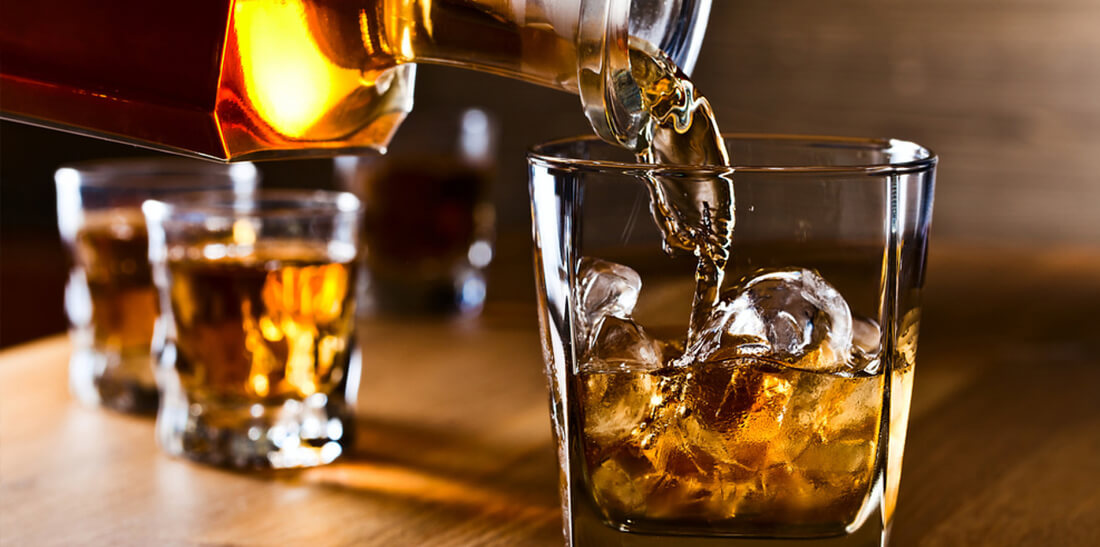10 Whisky Facts That Might Amaze You

10 Whisky Facts That Might Amaze You
Whisky, even though an ancient beverage with a truly intriguing history, is enjoying immense popularity in today’s times. This timeless and continuously evolving spirit has had an astounding voyage and is being savoured today by an ever-growing diverse community across the globe. Its production, steeped in tradition, is an art form with intricate complexities.
1) What's in a name?
Some say everything! The term ‘Whisky’ originates from the Gaelic words "Uisgebeatha or Usquebaugh” meaning “Water of Life”. The Scottish and the Irish are quite familiar to the Gaelic/Gaeilge language. As a matter of reference “When one speaks of “Scotch Whisky”, they usually mean a “Blended” whisky.
2) Whisky has been around for more than five centuries.
The origin of whisky may have come from the Christian Monks several hundred years ago, however, we can trace its “Scotch Whisky” ancestry to as far back as 1494.
3) What's the difference between Bourbon whiskey and Scotch whisky?
Being two heavy hitters in the whisky/whiskey industry, these two “Styles” have some unique differences. Scotch whisky is only made in Scotland from malted barley, while Bourbon is primarily from Kentucky, USA of a mash of not Less Than 51% Corn Grain.
4) Single Malt Whisky doesn't come from a single barrel or cask.
Any “Single Malt” may have 100-150 casks that have been "vatted" together by a Master Blender to create a consistent flavour profile. The name can be misleading for some as it may infer whisky from a single barrel. Rather, Single Malt is distilled at a ‘Single Distillery’ in Scotland and made from a single malted grain which is barley. It is then matured in Scotland in Oak Casks for a minimum of three years. Incredibly, there are over 5000 types of Single Malt Whisky!
5) The most expensive bottle of whisky.
In 2018, it was reported by BBC News that a bottle of Macallan Valerio Adami 1926, 60-year-old sold for a whopping £848,000 at an auction in Edinburgh, Scotland.
6) Whisky is long-lasting.
Remarkably, if stored vertically in a cool, dark place in a sealed bottle whisky may last more than a century! The oldest known existing bottle of whisky is a 400ml bottle of Glenavon, which dates back to the 1850s. Even open bottles, once resealed, can stay palatable for several years.
7) Whisky might be invincible.
Whisky buried below the floorboards of Antarctic explorer Ernest Shackleton's base camp hut in Antarctica in 1907 was discovered intact in 2010. The whisky, a 15-year old blend which was bottled in 1898, was still sloshing around in the bottle having withstood bone-chilling temperatures for more than 100 years. Once removed from the ‘Casks’ Whisky does not continue to mature in the bottle. So, despite being in the bottle about 112 years, it is still considered a 15-year old whisky!
8) Women and Whisky.
In the old days, whisky was linked to masculinity. Nowadays, women are sipping and distilling whisky in increasing numbers. Women are in technical roles at distilleries and have even opened a few distilleries. Women are also an excellent choice for taste testing as it is suggested, they have a better sense of smell and taste than men.
9) Whisky casks are usually previously used casks.
Amazingly casks in use across the world for maturing whisky may have previously matured rum, sherry, chardonnay, beer or even Mexico's mezcal. Scotch whisky distillers often re-use casks as many as eight times, meaning a good oak cask may have a working life of over eighty years.
10) When first distilled whisky is completely clear.
The golden hues develop during maturation in wood. Oak casks impart colour and flavour into the whisky over time, as such the longer it spends in casks the darker the colour of the whisky. Generally, aged whiskies will be darker. Alternatively, American bourbon must be aged in new charred oak barrels, immediately imparting a much darker hue.
